Meet the course manager: Horton Park’s Simon Adby
He maintains two footgolf courses, an adventure golf course, a nine-hole course and an 18-hole venue, and talks about what these extra non-traditional golf facilities mean for him and his greenkeeping team
Horton Park Golf Club in Surrey has everything the modern golfer would want. An 18-hole ‘Millennium Course’ featuring the longest Island green par three in England, a nine-hole academy course, an 18-hole ‘Jungle Island’ adventure golf course and two footgolf courses.
This is great fun for the club’s members and visitors, but it also means a huge workload for the club’s course manager, Simon Adby, and his team.
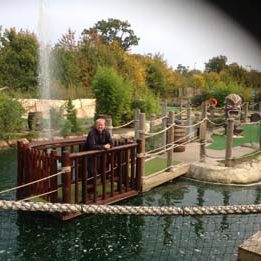
“Horton is anything but your stereotypical golf club,” he said. “I like to think of it as a golf facility, it’s very relaxed and friendly. How many golf clubs do you know that have a kiddies’ playground next to the clubhouse? The owner of the club, Richard Haygarth [current chairman of the UK Golf Course Owners’ Association] is very innovative in bringing new ideas to Horton with the aim of growing the game and increasing participation numbers and ultimately revenue.
“The challenges can range from fixing a Chinese life-sized animatronical gorilla on the adventure golf course to the AMS driving range robots.”
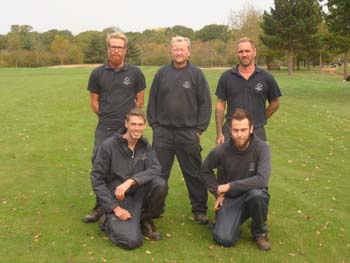
The club has more traditional issues to deal with as well, such as planned bunker renovation, as Simon details.
“During the winter of 2016 we took a look at the performance and aesthetic qualities of the current bunkering and came to the conclusion we needed to address them. We have a relatively bland site; we needed something different to give us a bit of wow factor, but also wouldn’t give us a maintenance headache.
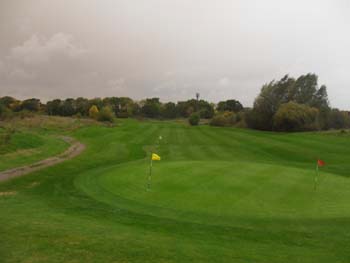
“I had read a few articles in Greenkeeping magazine regarding the EcoBunker and its recycled edging, and after many conversations with Richard Allen at EcoBunker, and a visit to other customers, we have taken the first steps into having the system installed in our two practice bunkers. If this proves successful with our customers we hope to continue the programme to the whole course during the winter of 2018.”
Away from bunkers, the adventure golf course was installed at the club in 2013, but what maintenance does this require? And what about the footgolf course?
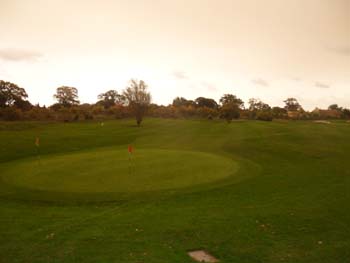
“The daily maintenance is very minimal with a blow and safety check, the water features are monthly treated with an algaecide and dyed,” he said. “All the planting, mainly bamboo, is minimal maintenance so it is just a small amount of pruning and a bit of routine weeding. We like to add a new feature to it on a yearly basis to keep it fresh and evolving. I am from a very traditional golf background but I can see what a massive impact the adventure golf has on getting the whole family into golf as well as the financial benefit to the club.
“Footgolf has no impact on our maintenance as it’s all laid out in our rough. We looked at our tee time bookings mid afternoon and found they were very low, so we decided to introduce footgolf. This has had no negative impact on our golf tee time sales as they can still start from the 10th tee, the extra revenue is a plus for the club but time will tell whether it will be long lasting or just another fad.”
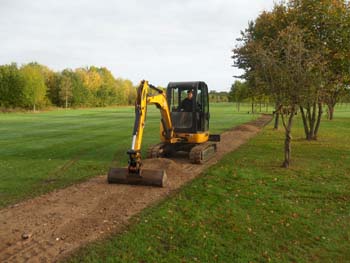
To further prove its forward-looking credentials, Horton Park will be introducing ‘Cosmic Golf’ in 2018.
“Cosmic Golf is a US concept launched by founder and ‘chief glowmeister’, Rob Peterson,” explained Simon. “There will be a total of nine targets on the range that react when hit by a ball, the targets will flash and make a noise so it makes the range experience much more interactive.
“Every Saturday night the range light will be dimmed and we will use glow balls to have a different sort of experience for our customers where the emphasis is on having fun.
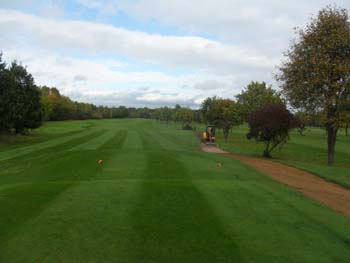
“Our challenge will be sorting the glow balls from the regular range balls in time for opening on Sunday morning.
“Cosmic Golf is just the first stage; then we will be improving the netting and installing AstroTurf to the out field. We are also in discussions with Trackman and Protracer about installing their software to introduce more games onto the range and appeal to a wider audience.“
Simon also revealed that there are big plans for the club’s buggy paths.
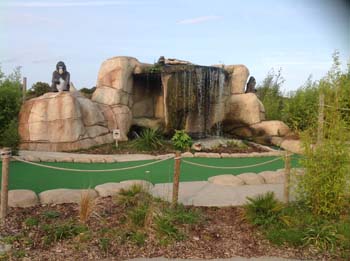
“During my first winter, which was extremely wet, we were simply unable to get from one end of the site to the other, let alone cut anything,” he detailed. “So we set about a plan to install a basic full buggy route through the whole course. This will enable us to keep buggies for hire for all 12 months of the year with the added advantage of enabling us to get machinery around the site without making a mess.
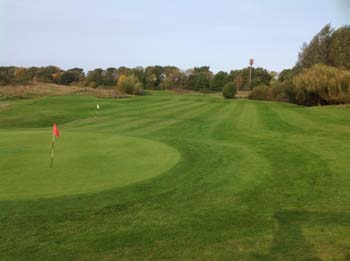
“We are in the process of purchasing a new fleet of buggies for 2018. These will have a GPS system fitted so we will be able to set them to paths only during adverse weather conditions. This work would ordinarily be done in-house but we simply don’t have the time at the moment with other ongoing projects so this work was contracted out. AMG Golf Course Renovations was appointed to install 3,000 metres of pathways.
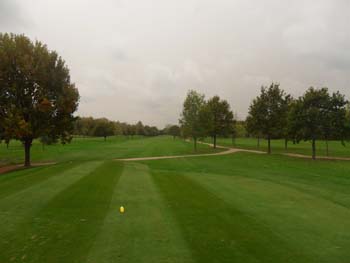
“This involved digging out to a four inch depth and two metres wide, this was backfilled with 40mm of recycled crushed concrete, then the main traffic areas were rolled, greens to tees, and topped. The new paths look like they have been there since day one and sympathetically flow through the course.”
Does Simon offer any tips on what aeration programmes are the most effective?
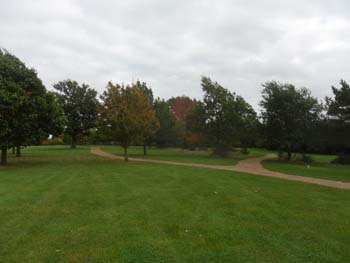
“Our two maintenance weeks are booked a year in advance which has pros and cons – you have a fixed date but can get hampered by the weather.
“During these two weeks we will verti-drain greens with three-quarters of an inch tines to a depth of 15 inches, followed by solid or hollow tining. Dependent on organic matter levels in the top 50mm we would anticipate applying 70 tonnes of RH28 sand each week.
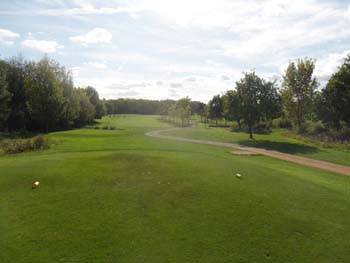
“Greens get Sarrel rolled weekly and further solid tining is done bi-monthly with 8mm tines. The tees and aprons are verti-drained twice a year and the fairways verti-drained once a year.
“When I was appointed one of the questions I was asked during my interview was what can I bring to Horton, my reply was to make a difference. We are not the best course in the UK and never will be but if we can present all areas of the site to a high standard it will enhance the members’ and customers’ experience.”
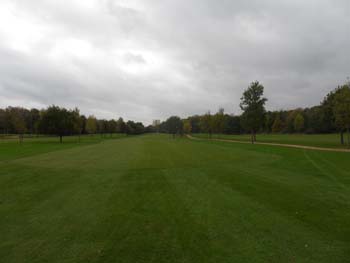
Simon also hopes the industry changes.
“From a personal note I think the NVQ system is a little weak, it’s really just a government quota to create a qualified workforce and isn’t a true apprenticeship.
“The infrastructure of many members’ clubs is flawed – in what other industry would you have a complete novice [an elected committee member] telling a qualified professional how to do his job … it’s just bonkers!
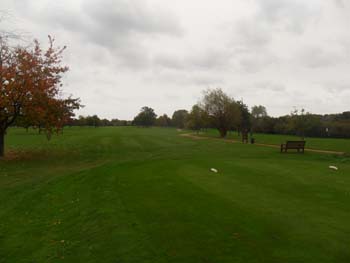
“But from the other side of the fence, greenkeepers need to remember the members’ and customers’ experience is what matters, so it’s all about balancing the expectations of your employers and customers, which is easier said than done.
“Do I have any advice for a young greenkeeper starting out today? One of my old bosses once said to me if you always do the best you can nobody can ever ask more of you. A statement I have taken with me in all walks of life, I would also say try to gain as much experience as you possibly can and always strive to do your best.”















Simon, you rock! Can’t wait to come back to the UK for more!
Check out the photos of the cosmic driving range